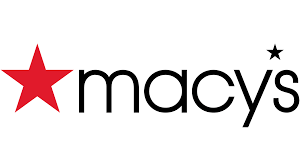The Global Wellness Summit (GWS), renowned for producing the wellness industry's longest-running and most comprehensive trend forecast, unveiled their highly anticipated 2025 trends report during their recent media event in New York City. This year's report, drawn from insights shared by hundreds of global health and wellness experts—including CEOs, physicians, investors, academics, and technologists—reveals a wellness market that's both defying economic expectations and undergoing radical transformation.
The wellness industry, now valued at $6.3 trillion and projected to reach $9 trillion by 2028, is experiencing unprecedented polarization between what GWS experts term “hardcare” and “softcare” wellness. Hardcare encompasses the high-tech, medical, and complex optimization market, from biohacking to longevity clinics. Softcare represents the growing desire for simpler, slower, and more accessible wellness experiences that prioritize social and mental wellbeing.
Against the backdrop of increasing global stresses—from climate disasters to politically divisive elections—the selected trends reflect major cultural shifts, address critical human and planetary health crises, and impact wellness beyond the privileged few. These trends, carefully chosen from dozens considered, represent lasting changes that will reshape the wellness landscape for years to come.
The wellness industry is undergoing a transformative shift in 2025, with emerging trends that reflect both technological advancement and a growing desire for authentic, disconnected experiences. Industry experts have identified ten key trends that are fundamentally reshaping how people approach health and wellness in the post-pandemic era.

1. Digital Detox Movement Gains Momentum
The “Great Logging Off” is emerging as 2025's defining wellness movement, as consumers increasingly recognize the toll of constant connectivity. As concerns about AI manipulation, online disinformation, and algorithmic addiction reach new heights, people are actively seeking ways to disconnect from the digital world.
Companies are responding with “calm tech” solutions and digital discipline apps, while governments worldwide implement “right to disconnect” laws protecting workers from after-hours communications. Several European countries have already passed legislation that fines companies for disrupting employees' personal time with work-related digital communications.
This digital detox trend is profoundly influencing real estate development, with “dumb homes” featuring minimal connectivity gaining popularity over smart home technology. These intentionally low-tech living spaces prioritize privacy and peace over convenience, reflecting a growing desire for digital boundaries.
Young consumers are driving a revival of analog experiences, from ceramics studios to intellectual “academic bars” and reading salons set to live music. These venues are creating new social spaces that rival traditional wellness clubs, offering structured, community-focused activities that promote mental well-being through tactile engagement and human connection.

2. Sauna Culture Reimagined
Traditional saunas are undergoing a dramatic renaissance, evolving from solitary, utilitarian spaces into vibrant social and cultural hubs. This transformation is particularly evident in urban centers, where new public saunas are reimagining the ancient practice for a modern, experience-seeking audience. From New York City's innovative bathhouses to Oslo's waterfront saunas and Tokyo's art-integrated thermal spaces, these venues are attracting a notably younger, more diverse demographic.
The European Aufguss movement, once confined to traditional spa regions, has become a global phenomenon. These theatrical sauna ceremonies, where trained masters perform choreographed routines with music, aromatherapy, and towel-waving techniques, are transforming heat therapy into an immersive entertainment experience. The movement has expanded beyond its Germanic roots, with countries like Japan and England recently joining international Aufguss competitions.
Design innovation is driving the trend, with facilities moving far beyond the traditional dark, wooden boxes. Modern saunas feature panoramic glass walls offering spectacular views, immersive digital art installations, and event-sized spaces that can accommodate dozens or even hundreds of people. These larger venues are becoming cultural destinations, hosting everything from DJ sets and drag performances to full-scale concerts, effectively bridging the gap between wellness and entertainment.
The social aspect is particularly appealing to younger consumers who are seeking alternatives to traditional nightlife. Many new sauna venues operate into the evening hours, offering alcohol-free social environments that combine wellness with community building. Forward-thinking facilities like Othership in Toronto and New York City have created vibrant communities around their bathhouse experiences, where the inability to use phones in high-temperature environments naturally facilitates genuine human connection.
Accessibility and democratization are key factors in this renaissance. Many stand-alone saunas are designed for public use with affordable entry fees, making this form of wellness available to broader demographics. In Brighton and Oslo, waterfront saunas have become popular community gathering spots, while urban facilities like Soak Bathhouses in Australia are innovating with “Soak and Sound” evenings that combine thermal experiences with live music performances.
Traditional spa facilities are also upgrading their sauna offerings with more experiential elements. Norway's Farris Bad spa resort has pioneered “Deep Listening Sauna Sessions” where guests combine heat therapy with vinyl record listening experiences, creating a multi-sensory wellness journey. These sessions, which alternate between sauna heat and cold ocean plunges while featuring carefully curated music, consistently sell out, demonstrating the growing appetite for innovative thermal experiences.
The trend reflects a broader shift in wellness culture, where traditional practices are being reimagined to meet contemporary social needs. By combining ancient thermal traditions with modern entertainment and community-building elements, these new sauna concepts are creating a fresh category in the wellness industry that bridges the gap between health optimization and social connection.

3. Supplement Industry Evolution
The $178 billion supplement market is undergoing a radical transformation, moving beyond basic vitamins to become a sophisticated sector driven by scientific innovation and personalization. This evolution comes at a crucial time, as consumers increasingly demand evidence-based products and transparency in an industry historically plagued by “science washing” and regulatory concerns.
Artificial intelligence and biomarker testing are revolutionizing personalization. Companies like Thorne HealthTech's Onegevity platform and InsideTracker are leveraging complex data analysis to create highly individualized supplement regimens. These platforms analyze thousands of biomarkers, genetic markers, and lifestyle factors to deliver precisely tailored formulations that adapt to changing body needs.
Longevity science is emerging as a major driver of innovation. New supplements target specific aging mechanisms such as mitochondrial health, telomere preservation, and cellular repair. Products like NAD+ boosters and senolytics, which eliminate “zombie” cells, are gaining traction. High-profile entries like David Beckham's IM8 brand, developed in partnership with Prenetics and the University of Oxford, are conducting groundbreaking research, including studying accelerated aging in space aboard the International Space Station to develop unique longevity formulations.
The GLP-1 companion supplement market is exploding in response to the popularity of weight loss medications like Ozempic. Companies like Elo Health are developing specialized formulations to address the muscle loss, nutrient imbalances, and digestive issues that can occur with these medications. These targeted solutions represent a new category of supplements designed to work in concert with prescription medications.
Women's health is receiving unprecedented attention. Innovation in hormonal health and fertility supplements is accelerating, with companies developing sophisticated solutions for menopause management. Morrama Labs' Luma app exemplifies this trend, collecting real-time data on temperature, heart rate, stress, and sleep patterns during menopause to create personalized supplement formulations that are 3D-printed into monthly pill batches.

4. Teen Mental Health Takes Priority
The wellness industry is finally addressing the teen mental health crisis with comprehensive, age-appropriate solutions that go beyond traditional therapy. This shift comes as teen anxiety and depression rates reach unprecedented levels, exacerbated by social media pressure and societal stresses.
New wellness destinations are creating programs specifically for adolescents. In Bali, off-grid sanctuaries help teenagers manage digital overstimulation through nature immersion and mindfulness practices. Surf therapy retreats in the UK and Morocco combine the meditative aspects of surfing with trauma-informed therapy, creating powerful healing experiences that blend culture, connection, and physical activity.
Major hospitality brands are investing in teen wellness initiatives. Rosewood Hotels has developed teen-specific spa treatments and wellness activities, while One Hotels offers environmental education programs that combine conservation work with personal development. Carillon Miami is pioneering adaptive wellness programs for sports-involved teens and specialized approaches for neurodivergent youth.
Urban and suburban wellness programs are making teen mental health support more accessible. Free mental health apps like Clear Fear and Sorted Teens have been designed specifically for adolescent users, offering age-appropriate tools for anxiety management and resilience building. These digital solutions complement in-person programs, creating a comprehensive support system.
The trend encompasses innovative therapy modalities tailored to teen preferences. Sound therapy sessions, art therapy workshops, and nature immersion programs are being adapted specifically for adolescent participants. Group activities that combine skill-building with emotional support, such as teen cooking classes focused on mental health and nutrition, are gaining popularity.
Sports and movement-based programs are being reimagined through a mental health lens. Traditional athletic training is now being combined with mindfulness practices, stress management techniques, and social-emotional learning. These integrated approaches help teens develop both physical and mental resilience while building supportive peer communities.
Education and prevention are becoming key focuses, with programs designed to help teens understand and manage their mental health proactively. Workshops on social media management, stress reduction, and emotional intelligence are being incorporated into school curricula and after-school programs, creating a more comprehensive approach to teen wellness.

5. Water Conservation Emerges as Critical Focus
The global water crisis has reached a critical turning point, with demand more than doubling since 1960. This challenge is particularly relevant to the wellness industry, where international tourism's 236% growth over two decades has significantly impacted water resources. Luxury hotels and spas, among the largest water consumers in the tourism sector, are now facing pressure to address their environmental impact, especially in water-stressed locations like Arizona, California, the Middle East, and island destinations.
Leading wellness facilities are responding with innovative solutions. Rancho La Puerta in Mexico invested $5 million in a water treatment plant processing 27 liters of sewage per second, while The Ranch Malibu partnered with Clean Water Foundation to provide safe drinking water to 5,000 people in Uganda. Kohler's Safe Water for All initiative has impacted over 2.2 million lives through water-focused engineering solutions, demonstrating the industry's potential for positive change.
Technology is playing a crucial role in water conservation efforts. New developments include atmospheric water generators that extract water from air, AI-powered systems like WaterGuru for real-time monitoring, and advanced desalination plants. Currently, 16,000 desalination facilities globally produce 35 trillion liters of freshwater annually, with ambitious projects like Jordan's planned facility set to generate 350 billion liters yearly.
The $6.3 trillion wellness industry has both the capability and responsibility to lead in water conservation. Success stories like Singapore and Las Vegas demonstrate how communities can thrive in water-scarce conditions through innovative approaches. As industry leaders emphasize, the future of wellness must incorporate water sustainability as a core principle, focusing not just on individual facilities but on replenishing community and global water systems.

6. Augmented Biology Advances
The wellness industry is witnessing a paradigm shift as the once science-fiction concept of merging human biology with advanced technology becomes reality. This transformation comes at a pivotal moment, as we transition from the “information decade” into an era where AI and emerging technologies enable us not just to understand our biology, but to actively optimize it.
The market reflects this evolution, with AI healthcare companies attracting $2.8 billion in investment in early 2024, projected to reach $11.1 billion by year's end according to Silicon Valley Bank. This surge in funding is driving innovations across multiple fronts. Brain-computer interfaces, like Neurable's smart headphones, are providing unprecedented insights into cognitive health and burnout management. Meanwhile, companies like Arcteryx are pioneering wearable robotics, such as the MO/GO trousers that offer a 40% boost to leg muscle strength through integrated technology.
Consumer adoption of health optimization technology is accelerating, with 87% of smartwatch users reporting adoption of new healthy behaviors. This trend extends beyond basic fitness tracking to more sophisticated applications. The personalized medicine and prevention sector, as reported by the Global Wellness Institute, is expected to grow at 6.1% annually, reaching $1.05 trillion by 2028. This growth is particularly notable among younger generations, with 60% of Gen Z prioritizing healthy lifestyles over traditional markers of success like wealth or career advancement.
The future of augmented biology promises to redefine human capability, moving beyond mere survival to active thriving. As AI integration in healthcare gains acceptance (with 57.6% of global respondents expressing positive attitudes), we're seeing the emergence of increasingly sophisticated personal health optimization tools. This represents a fundamental shift in wellness, where technology doesn't just monitor our health but actively enhances our physical, cognitive, and emotional capabilities.

7. Longevity Reshapes Workplace Dynamics
The wellness industry is positioned at the forefront of a major workforce transformation as the population of workers aged 65 and older continues to grow significantly. This demographic shift is projected to be particularly pronounced, with the global over-65 population expected to reach 1.6 billion by 2050, and in the US specifically, this age group is forecast to represent 8.6% of the labor force by 2032.
Asian countries, particularly Hong Kong, South Korea, and Japan, are leading this trend, while China faces a unique challenge due to its previous one-child policy, with predictions suggesting its population could halve by 2100. Even regions with traditionally younger populations, such as sub-Saharan Africa, the Middle East, and South Asia, are beginning to experience similar demographic shifts.
Governments worldwide are actively implementing policies to encourage longer workforce participation, with countries like the US, Japan, and Germany adjusting retirement ages and offering incentives for extended employment. These policy changes are driven by concerns about pension sustainability and healthcare costs, while also recognizing the need to create more age-inclusive workplaces that leverage the experience and capabilities of older workers.

8. Addiction Treatment Evolution
The addiction treatment landscape is experiencing a significant transformation, with traditional medical approaches being integrated with wellness practices. Luxury treatment centers worldwide are now offering comprehensive programs that combine medical care with wellness therapies like massage, meditation, and equine therapy. These facilities, located in picturesque settings from Switzerland to Australia, cater to a high-end clientele seeking holistic recovery solutions.
The industry is also seeing a rise in consumer-focused wellness brands developing innovative products for harm reduction and recovery support. These include nicotine cessation aids with modern features like social media integration, herbal alternatives to tobacco, and products designed to help with cannabis overconsumption. The market is responding to various forms of addiction, from substances to technology, with specialized solutions and support systems.
Wellness-focused sobriety retreats are emerging as a new category, offering everything from digital detox experiences in the Sahara Desert to specialized programs for specific demographics like sober mothers. These retreats focus not just on abstinence but on overall emotional and physical wellbeing, providing tools and techniques for sustainable lifestyle changes.
Looking ahead, the global substance abuse treatment market is projected to grow from $11.8 billion in 2023 to $22.8 billion by 2031. The future points toward increased partnerships between wellness providers and treatment facilities, continued development of innovative consumer products, and a growing need for more accessible treatment options alongside luxury offerings.

9. Wellness on the Line
Luxury train operators like Belmond are leading a wellness revolution on the rails, with offerings like the Dior Spa on the Royal Scotsman and Eastern & Oriental Express. These mobile spas feature treatment rooms decorated in Dior's signature style and offer bespoke wellness treatments that complement outdoor activities like wild swimming and hiking.
Train travel itself is being recognized for its wellness benefits, with initiatives like LNER's Wellness Train in the UK offering mindfulness activities during journeys. This trend connects to the growing interest in slow travel, where the journey becomes part of the wellness experience rather than just reaching a destination.
The cruise industry is similarly embracing wellness, with new developments like Blue World Voyages creating the first cruise line dedicated to sport and wellness, launching in 2026. Their ships will feature entire decks dedicated to wellness facilities, including extensive spa services, fitness areas, and wellness clinics staffed with health professionals.
The future of wellness travel on both rails and seas is expected to grow significantly, with more operators likely to incorporate wellness offerings to differentiate themselves. This trend aligns with the increasing demand for sustainable and slow travel experiences, where travelers can connect more deeply with destinations while maintaining their wellness routines.

10. Middle East Emerges as Wellness Hub
The Middle East is rapidly transforming into a global wellness hub, blending cultural heritage with modern innovation. The region's wellness economy is experiencing significant growth, with Saudi Arabia's market alone valued at $19.8 billion and wellness tourism growing at 66% annually. Major developments like Red Sea Global's AMAALA project and various luxury wellness resorts are emerging across the region, offering immersive experiences that combine traditional Arabic healing practices with cutting-edge medical services.
The wellness transformation is deeply integrated into national development strategies, with countries like Saudi Arabia (Vision 2030), UAE (Vision 2031), and Qatar (National Vision 2030) prioritizing preventive healthcare and wellness tourism as key components of economic diversification. These initiatives are perfectly timed with global shifts toward health-conscious living, particularly among younger generations who seek authentic wellness experiences that respect local traditions.
Cultural authenticity plays a central role in the region's wellness offerings, with properties like Qatar's Zulal Wellness Resort integrating traditional Arabic and Islamic medicine with modern spa therapies. The halal wellness market is expanding, including beauty products, spa treatments, and alcohol-free resorts, turning what was once considered a limitation into a unique selling point for wellness tourism.
Sports and community wellness initiatives are also driving the region's transformation, from Qatar's Aspire Academy to Saudi Arabia's Sports Boulevard project. These developments, combined with high-tech medical innovations and a focus on preventive healthcare, are positioning the Middle East as a leader in global wellbeing, offering a unique model that merges tradition, innovation, and inclusivity.
These trends reflect a growing emphasis on holistic wellbeing, combining technological advancement with intentional disconnection, while addressing crucial environmental and social challenges. As the industry continues to evolve, these trends are expected to shape wellness practices throughout 2025 and beyond, creating new opportunities for both providers and consumers in the wellness space.









